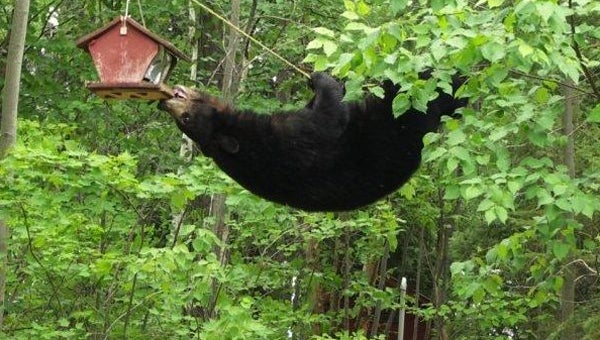N.C. black bears smarter than many animals
Published 1:23 pm Monday, July 28, 2014
Our North Carolina black bear have come a long way since they were nearly eradicated from the eastern part of the state. In fact, the bear population is even considered to be a nuisance in some areas.
Like the whitetail deer, the black bear have adapted to man and agriculture. With lots of edible crops to feed on and dense forest to make their homes, there’s no doubt that we now have more deer and bear than when the original colonists found when our area was first settled.
There are several sections in Beaufort, Hyde, Tyrell and Washington Counties where people enjoy going out to the edge of wheat fields just before dark and watching the bears as they feed. These “bear watchers” have reported that they’ve seen mother bears with as many as four cubs in tow, feeding on agricultural crops.
Bear have learned that after the wheat fields have been harvested, fields containing ripe corn will hold lots of good food for the taking. When that food source is gone, the bear will often adapt to feeding on garbage dumps or garbage contained in cans behind people’s houses. If there’s a strong odor of fresh food coming from within a house, the bear have been known to break out windows and crawl into homes looking for food.
Landowners often comment on just how smart bears are. Hyde and Tyrell County farmers with large tracts under cultivation have reported seeing as many as 35 bears feeding on one farm on one afternoon on the day before the bear hunting season opens. Hunters who go out on the opening day expecting to see lots of bears but see virtually none often say that the bears have been reading the book on hunting seasons and know this is a good time to remain out of sight.
Whitetail deer still remain a little shy about getting too close to man, but bear are rapidly becoming a little too familiar with humans. Bears are often found well inside the city limits of our larger cities like Raleigh or Charlotte.
There have been several instances in the last few years where bears have been videotaped as they walked through automatic doors at hospitals entrances and walked boldly through the relatively deserted halls at night. “They completely ignored the no visitors signs,” said (tongue–in-cheek) hospital employees.
Deer hunters and landowners have had some of the most interesting human-bear experiences involving permission only signs nailed to trees. Black bears like to mark their territory by scraping the bark off trees along certain boundary areas. When hunters put up white or yellow-posted signs, the bear take this as an intrusion into their territory and use their claws to tear the signs down.
A couple of years ago, the N.C. Wildlife Resources Commission introduced a new rule that allowed hunters or landowners to post their land with a purple mark painted on trees. It didn’t take long for the bears to discover that this was something new. Quickly, the bears began to try and remove the purple marks on trees with their claws.
Several years ago, I’d shot a deer and was going about gutting it in the woods instead of dragging the intact carcass to my car. As I bent over to remove the excess weight from the deer, I had an eerie feeling that something was watching me. I turned around and there, about fifteen yards back of me, sat a young bear of about 150 pounds just waiting for me to finish my work. It sat there until I finished the job and as soon as I left with the deer in tow, it moved in on the gut pile and began feeding.
The bear have learned that the sound of a gunshot usually means that there may be a dead or dying deer in the area and they’ll quickly move in on the free meal of fresh venison before the hunter can get there. Hunters have learned that they need to get to a deer they’ve shot as soon as possible to prevent a hungry bear from stealing the carcass.
On another occasion, I was dragging a deer out of the woods during the hot, early season and decided to get my son to come help me with the job. I left the gutted deer with a rope around its neck lying on the ground and went for help. When we returned a short time later we found that something had dragged the carcass off. We followed the fresh blood markings and found a bear a couple of hundred yards deeper in the woods feeding on my freshly killed deer.
Another incident between a hunter and bear occurred when that hunter was dragging a deer out and a young bear came up from behind and literally started pulling away on the deer’s carcass. It took a little while for the tug-of-war to end and the hunter could again continue pulling the carcass out of the woods.
During the early deer seasons when young bear haven’t become even a little shy of humans, hunters have sat quietly in their ladder stands while an inquisitive young bear climbed up the ladder and started to join the hunter. A sharp blow from the hunter’s boot to the bears nose convinced the bear to go and find its mother.
Eastern North Carolina has become notorious among hunters as well as wildlife watchers for our huge population of black bears.
Some farmers hate them for the crops they destroy. Homeowners complain that bears are getting into their garbage cans while wildlife observers truly enjoy just watching the antics of the mature and juvenile animals as they feed. Our wildlife managers enjoy the praise they receive for the way they’ve overseen the successful recovery of the black bear population here in Eastern North Carolina. It’s truly one of our greatest natural resources.






